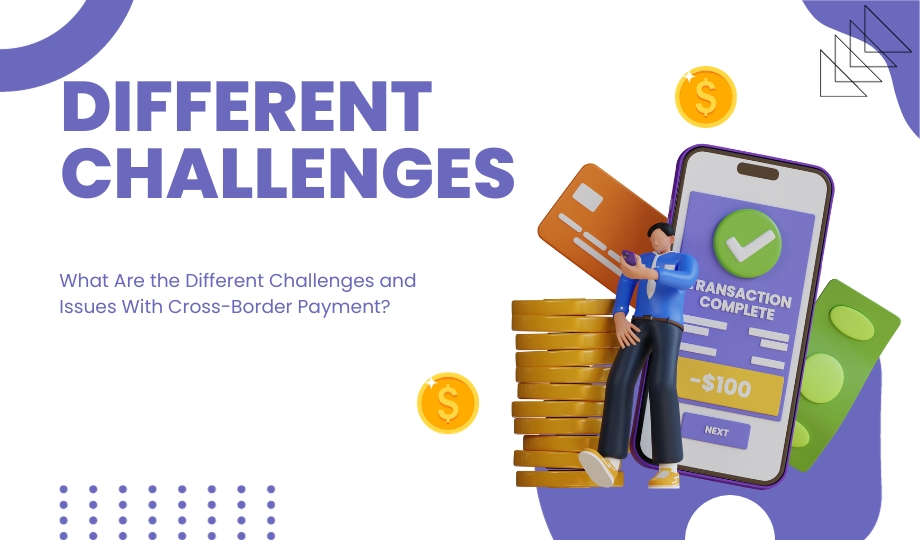For online businesses, regardless of their domain, facilitating cross-border payments is crucial. This enables them to reach a wider audience and offer their products and services on a global scale. However, with the benefits of cross-border payments come several challenges that must be addressed. In this comprehensive guide, we will explore what cross-border payments entail, the common types of cross-border transactions, the inherent challenges, and effective strategies for businesses to tackle these obstacles.
Understanding Cross-Border Payments
Cross-border transactions, often referred to as international transactions, involve parties from two different countries. A classic example is a buyer from India purchasing goods from a business based in the USA. These transactions extend beyond e-commerce and can encompass acquisitions, mergers, distribution contracts, and more.
Here are some common types of cross-border transactions:
Retail Cross-Border Transactions: This category includes person-to-person, business-to-person, and business-to-business international payments. Examples include bank transfers, card payments, and remittances.
Wholesale Cross-Border Transactions: These transactions occur between financial institutions such as banks to support international activities or meet customer demands. Examples include securities trading, foreign exchange, lending, and borrowing.
Governments and Large Non-Financial Companies: These transactions are utilized by non-financial companies and even governments for various purposes.
The Process of Cross-Border Money Transfer Cross-border money transfers involve several steps:
Purchase: The transaction is initiated by an entity, whether a customer or institution, entering their payment details (banking information, credit card data, etc.).
Routing and Processing: Payment data is encrypted and transmitted to the issuing bank for authorization.
Payment Verification: The receiving or acquiring bank verifies the payment and approves or declines it based on various parameters, ensuring sufficient funds are available.
Confirmation: Upon approval, the user receives a “successful” message, but the funds are not yet credited to the receiver’s account.
Fulfillment: In the case of retailers, order fulfillment begins if the transaction is successful. Otherwise, it proceeds to the settlement phase.
Settlement: Funds are transferred to the recipient’s bank account after approval, typically via an automated clearing house (ACH), which takes 2-5 business days to complete.
Cross-Border Payment Settlement by Banks
Cross-border payment settlement involves debiting money from one account and crediting it to another in a different country. This process can occur smoothly if there’s a direct link between the banks. However, when no direct link exists, a correspondent bank intervenes, mediating the transaction and currency conversion. This intermediary provides accounts for both banks involved in the transaction.
Duration of Cross-Border Payments
A typical cross-border transaction takes around two business days to complete, but the actual time may vary based on factors such as the destination of funds, the number of intermediaries involved, and the chosen payment method. Credit card transactions are the quickest, often processing almost immediately. International wire transfers typically take two business days, while traditional international bank transfers can take 3-5 business days due to less digitization and manual checks.
Common Challenges in Cross-Border Payments
Payment Processing: Processing international payments is complex and time-consuming, often subject to interruptions or delays. Common reasons include incomplete payment information and rigorous fraud screening processes.
Lack of Transparency: Parties involved in cross-border payments lack real-time transaction updates, hindering data analysis and impacting customer experiences.
Legal Issues: Varying interpretations of contracts and legal regulations across countries can lead to complex legal challenges.
Taxation: Divergent tax rules can result in high transaction fees, adding financial burdens to transactions.
Compliance Issues: Complex compliance checks vary among payment gateways and banks, causing delays and declines.
Data Protection: Varied data protection regulations worldwide can lead to transaction declines and penalties for non-compliance.
Security Concerns: Weak security protocols by other parties involved can result in data breaches and financial losses.
Operational Systems: Legacy operational systems may not support real-time tracking and settlement delays.
Fees and Exchange Rates: Different fees, including SWIFT messaging and currency conversion, can accumulate, increasing transaction costs.
How Web Technology Expert Addresses Cross-Border Payment Challenges
Web Technology Expert is an orchestration platform designed to assist businesses in managing payments from end to end. Here’s how it helps overcome challenges related to cross-border payments:
Multiple Payment Options and Routing: Web Technology Expert enables integration with over 30 payment gateways and offers more than 300 payment methods, allowing businesses to offer diverse options to global customers. It also facilitates routing transactions through the optimal payment gateway based on factors like authorization rates, transaction fees, and speed.
Security, Data Protection, and Compliance: Web Technology Expert incorporates robust anti-fraud tools, enhancing payment security and ensuring compliance with SCA, PCI-DSS, and GDPR regulations.
Complete Transparency: The Web Technology Expert dashboard provides real-time transaction details, enhancing transparency, and empowering businesses with valuable data analytics for service improvement and a better customer experience.
In summary, Web Technology Expert serves as a comprehensive solution for businesses seeking to expand globally, address cross-border payment challenges, and provide exceptional customer experiences. If this aligns with your business goals, consider trying out Web Technology Expert to propel your growth.

